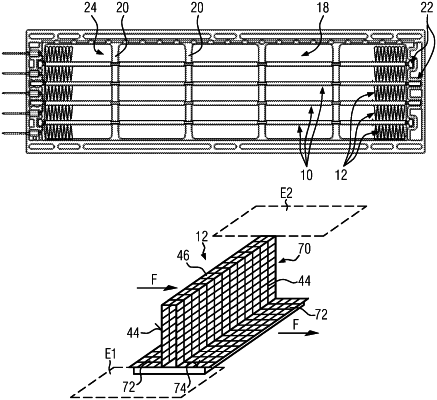| CPC B60H 1/2225 (2013.01) [F24H 3/0435 (2013.01); H05B 3/0014 (2013.01); H05B 3/06 (2013.01); H05B 3/34 (2013.01); B60H 2001/2228 (2013.01); H05B 2203/02 (2013.01)] | 18 Claims |

|
1. An electric heating device for a motor vehicle, comprising:
a housing having an inlet opening and an outlet opening for a medium to be heated, wherein
the housing encloses a layered structure comprising at least one PTC element which is electrically conductively connected to connections of different polarity, and which comprises heat-emitting elements that are heat conductively connected on opposed sides to the PTC element;
wherein the heat-emitting elements include a panel element that is provided with perforations in the form of a mesh wire or an expanded metal or a perforated sheet and that is made of heat-conducting material, wherein the perforations are distributed throughout the entire panel element at a regular interval with no space among them; and
wherein each of the heat-emitting elements is formed of at least one track of the perforated panel element, which track is meanderingly bent; and
wherein the panel element forms each heat-emitting element and a conducting element which electrically conductively abuts the PTC element.
|